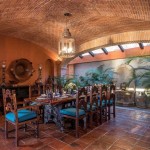Interior Glass Windows: Embracing Elegance and Functionality
Interior glass windows are architectural marvels that elevate the aesthetics and practicality of any space. These versatile windows offer a plethora of benefits, ranging from enhanced natural lighting to improved spatial flow. Let's explore the essential aspects of interior glass windows, unraveling their transformative potential.
1. Natural Light Maximization
Interior glass windows are designed to harness natural light, effectively illuminating even the darkest corners of a room. By allowing sunlight to penetrate deep into the space, these windows create a brighter and more inviting ambiance. Moreover, natural light has proven to enhance mood, boost productivity, and reduce eye strain. By incorporating interior glass windows, you can transform your living quarters into a sunlit oasis.
2. Spatial Expansion
Glass windows possess an inherent ability to create a sense of spaciousness. Whether installed in partitions or as part of a larger wall design, they visually expand the perceived boundaries of a room. The transparent nature of glass allows light to flow uninterrupted, giving the illusion of a larger and more airy environment. Interior glass windows are particularly effective in compact spaces, as they enhance the feeling of openness without sacrificing natural light.
3. Improved Ventilation
In addition to their aesthetic appeal, interior glass windows contribute to improved indoor air quality. They allow for effective cross-ventilation, facilitating the natural exchange of fresh and stale air. The circulation of fresh air helps reduce indoor pollutants, creates a healthier living environment, and prevents air stagnation. Whether it's a large sliding door or a small transom window, interior glass windows provide a valuable solution for maintaining optimal indoor air quality.
4. Aesthetic Versatility
Interior glass windows offer a wide range of design possibilities. From sleek and minimalist to ornate and decorative, there's a style to complement any architectural vision. Clear glass provides unobstructed views, while tinted or frosted glass offers privacy and diffused light. Designers can also incorporate various patterns, textures, and etched designs to create visually captivating windows that serve as statement pieces.
5. Architectural Flexibility
The inherent flexibility of interior glass windows allows for innovative and unconventional architectural designs. They can be installed in walls, ceilings, and even floors, creating unique and dynamic spatial configurations. Whether it's a suspended glass ceiling that floods a room with natural light or a floor-to-ceiling glass partition that seamlessly divides a space, interior glass windows empower architects to push the boundaries of design.
Conclusion
Interior glass windows are not mere architectural elements; they are transformative tools that shape the ambiance, functionality, and aesthetics of any space. By harnessing natural light, expanding spatial boundaries, improving ventilation, offering design versatility, and enabling architectural flexibility, these windows elevate the living experience, creating spaces that are both beautiful and practical. Whether you're renovating an existing structure or designing a new one, consider incorporating interior glass windows to unlock the transformative power of natural light and elevate your living space to new heights.

Why You Might Want Interior Windows Portella

Ten Interiors By Architects That Use Internal Glazing To Create Space And Light

Mad About Internal Windows

A Wall Of Interior Windows Brings Light To This Guest Alcove Glass Room Divider Partition

10 Diffe Types Of Windows Glass For Home Ais

Spotlight On A New Trendy Decoration Interior Glass Walls

Why You Might Want Interior Windows Portella

Smart Windows For Interior Design Electratint

Glass Interior Wall And Pivoting Windows Contemporary Hallway Landing Bridgeport By Nautilus Architects Houzz

Borrowed Light The Appeal Of Interior Glass Doors And Windows Shaker Edition Remodelista








